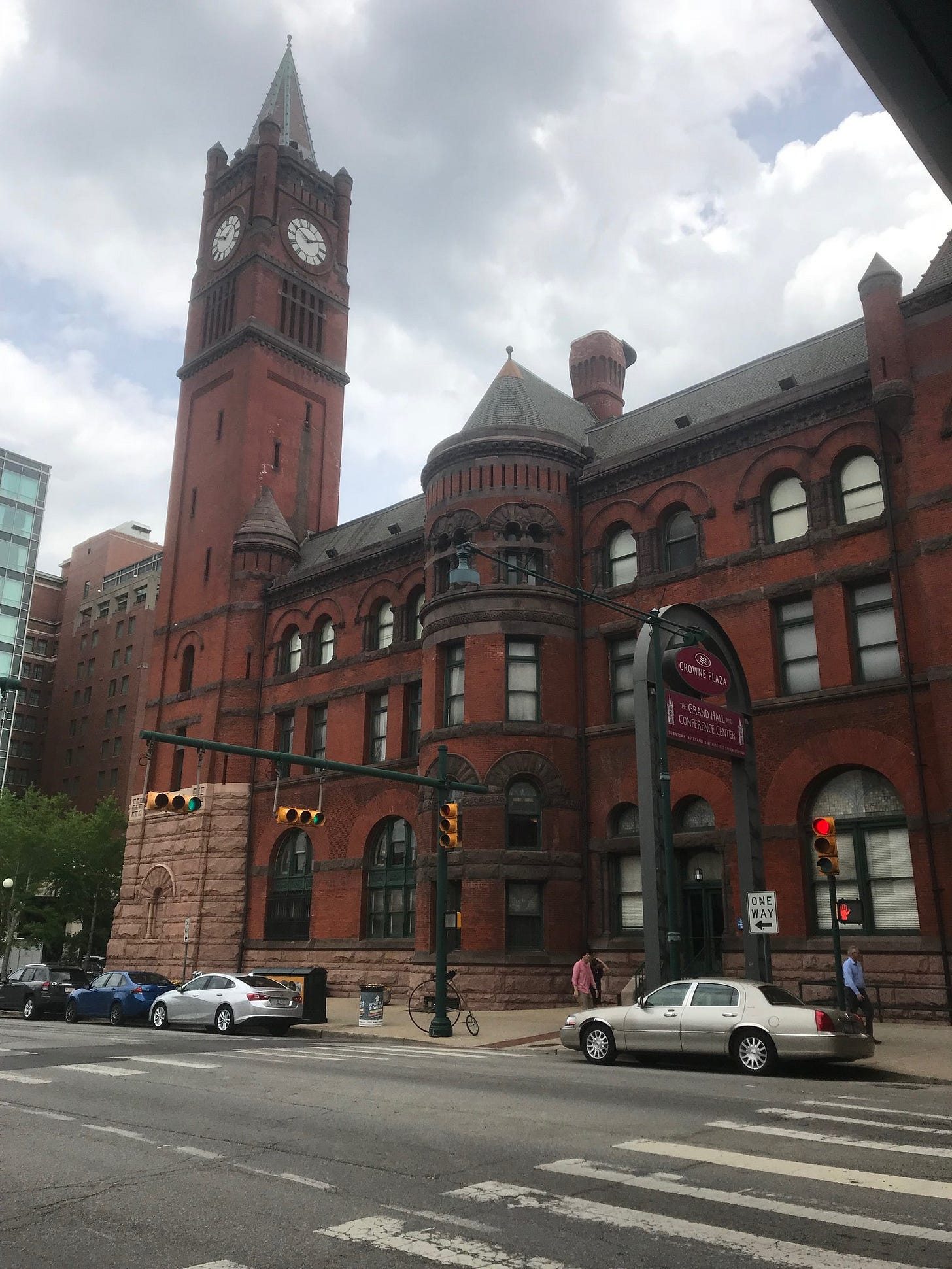The Indianapolis - California Connection
Beginning in 1834 when the National Road wood covered bridge spanned the White River at the Cradle of Indianapolis, where in 1820, John McCormick built the city’s first cabin, by 1849, gold and the other riches of California became accessible to the East. The following Proclamation draft explains the epochal significance of this once amazing structure::
WHEREAS, the National Road from Washington DC entered the frontier of the West, where there were no roads, after crossing the White River in 1834; and,
WHEREAS, before the river was widened, as a wood covered bridge, this halfway spot on the Washington Street bridge/promenade marks where it met the bridge that had been built 36 years before; and,
WHEREAS, the National Road Bridge was adjacent to the first Indianapolis cabin and stimulated commerce on the Indianapolis riverfront which used the White River for power to send food and and other resources to the West; and,
WHEREAS, the wood covered bridge sent over half a million people off to the West in search of gold and other riches; and,
WHEREAS, the National Road bridge set in place the momentum that would civilize all of America; and,
WHEREAS, the National Road Bridge, was sadly dismantled in 1902,
By the authority vested in me as the Mayor of Indianapolis, I hereby declare this to be the location of the original Gateway to the Frontier
When covered wagons gave way to trains as the way to go West when the Transcontinental Railroad was completed in 1869, Indianapolis once again led the way for the people of the East to get to California.
As the train station that settled California, by 1870 Union Staton was sending 80 trains a day (two million passengers/yr) to Chicago on their way to San Francisco. During 1889, 320,996 passenger train cars (across 45,204 trains) and 861,991 freight cars passed through the station. By 1900, over 200 trains a day were rolling thru the Railroad city of the West, as Indianapolis was known at the time…




